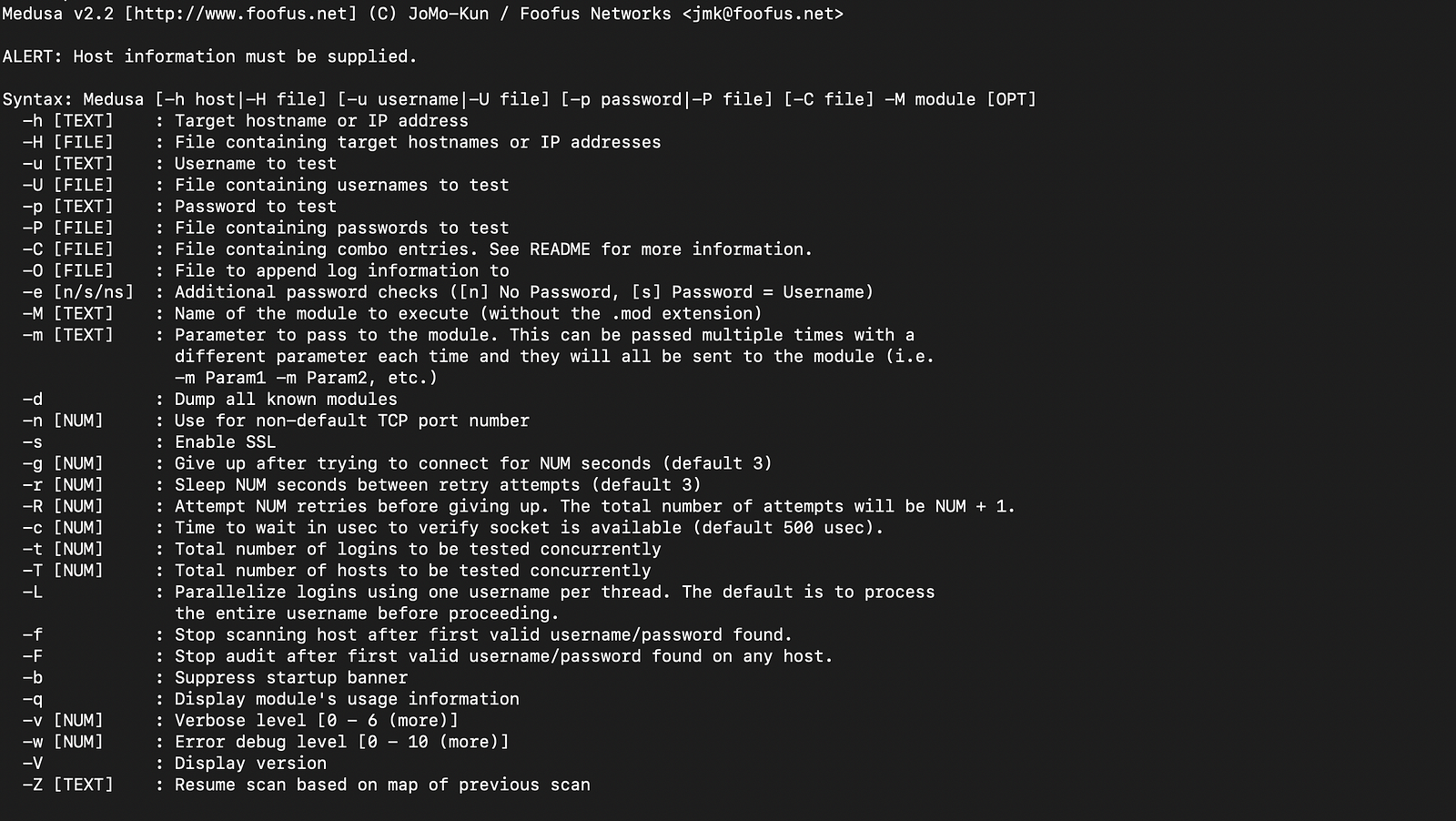
How to Use Medusa for Fast, Multi-Protocol Brute-Force Attacks - Security Tutorial
How to Use Medusa for Fast, Multi-Protocol Brute-Force Attacks - Security Tutorial 관련



As a pentester (a fancy term for an ethical hacker), you will often attack systems the same way a malicious hacker does. But your goal will be to find weaknesses - so teams can work to address them. One such system is password-based authentication.
Brute-force attacks are a common method used to crack passwords. They work by trying many username and password combinations.
This can be time-consuming. But tools like Medusa can help. They make the process faster and more efficient.
In this article, we’ll learn how to use Medusa for fast, multi-protocol brute-force attacks. I’ll walk you through the basics of installation, usage, and some practical examples.
Note
Brute-force attacks are illegal unless you have explicit permission to test the system. Medusa is a powerful tool and can easily overwhelm a server if not used carefully. Make sure you have permission from the system owner before using it.
What is Medusa?
Medusa is an open-source command-line tool designed for fast brute-force password cracking. It supports many protocols, such as FTP, SSH, HTTP, and others.
Security professionals use Medusa to identify weak or default passwords. Attackers can easily exploit these passwords. By simulating a brute-force attack, Medusa can reveal security gaps, allowing us to fix them before a real attack occurs.
Medusa’s parallel connection lets it brute-force multiple targets at once. This is key to Medusa’s speed.
Key Features of Medusa:
- Multi-threaded: Allows fast, simultaneous brute-force attempts.
- Supports many protocols: FTP, SSH, HTTP, RDP, MySQL, and more.
- Modular: You can easily add support for new services or protocols.
Now, let’s dive into how to install and use Medusa.
How to Install Medusa
Medusa can only run on Linux and Mac.
sudo apt install medusa
brew install medusa
You can verify the installation by typing “medusa” in your terminal. If installed correctly, this will show the Medusa help menu.

How to Work with Medusa
After installing Medusa, you can use it to brute-force different protocols. Let’s go over the basic syntax and a few common use cases.
Medusa’s general syntax looks like this:
medusa -h [target IP] -u [username] -P [password list] -M [module] -t [threads]
-h: Specifies the target host (IP address or domain name).-u: Sets the username to use during the brute-force attack.-P: Specifies the path to the password list file.-M: Select the module or protocol (such as SSH, FTP, or HTTP).-t: Sets the number of threads for parallel connections (default is 16).
Example 1: Brute-forcing SSH
Let’s say we want to brute-force an SSH login on a remote server with the IP address 192.168.1.100. We have a username admin and a password list located at /usr/share/wordlists/passwords.txt.
The command would look like this:
medusa -h 192.168.1.100 -u admin -P /usr/share/wordlists/passwords.txt -M ssh -t 10
This command tells Medusa to:
- Target
192.168.1.100. - Use the
sshmodule. - Attempt to log in as the user
admin. - Use the passwords listed in the file
/usr/share/wordlists/passwords.txt. - Use 10 parallel threads for faster execution.
Example 2: Brute-forcing FTP
For an FTP brute-force attack, the command is quite similar. Imagine the FTP server is at 192.168.1.105, and we’re targeting the username user123 with a password list.
Here’s the command:
medusa -h 192.168.1.105 -u user123 -P /usr/share/wordlists/passwords.txt -M ftp -t 8
This command will try to find the password for user123 using the FTP protocol. It will attempt 8 parallel threads for a faster result.
Example 3: HTTP Login Brute-Force
Brute-forcing an HTTP login page can be a bit more complicated. You need to know the form fields for username and password, and sometimes, the URL of the login action. Here’s an example of brute-forcing an HTTP login:
medusa -h example.com -U usernames.txt -P passwords.txt -M http -m FORM:/login.php:username_field=password_field -t 5
In this example:
-U: Specifies a list of usernames.-m: Specifies a custom module for HTTP form brute-forcing. The format isFORM:[login action URL]:[username field]=[password field].-t 5: Runs five parallel threads.
This command will attempt to brute-force login for the users listed in usernames.txt using the passwords in passwords.txt on the HTTP form located at /login.php.
How to Customize Medusa Attacks
Medusa is highly customizable. You can control everything from the number of threads to the password list and the behaviour of the attack. Let’s explore a few customization options.
Customizing the Number of Threads
The -t flag allows you to adjust the number of threads Medusa uses. More threads mean faster attacks, but may overwhelm the target or your system.
For example, to use 20 threads:
medusa -h 192.168.1.100 -u admin -P passwords.txt -M ssh -t 20
Targeting Multiple Hosts
You can also target multiple hosts by using the -H option with a file that contains a list of IPs. For example:
medusa -H hosts.txt -u admin -P passwords.txt -M ssh -t 10
In this case, hosts.txt is a file that contains a list of target IPs. Medusa will attempt to brute-force the SSH logins on each of these hosts.
Using Multiple Usernames
If you want to try multiple usernames, you can use the -U option to provide a file that lists usernames:
medusa -h 192.168.1.100 -U users.txt -P passwords.txt -M ssh -t 10
This will test each username in users.txt against the target, using passwords from passwords.txt.
Conclusion
Medusa is a versatile and powerful tool for performing brute-force attacks and identifying weak passwords. You can target services like SSH, FTP, and HTTP, among others. You can customize the attack by adjusting the number of threads, targeting multiple hosts, or using different wordlists.
Hope this tutorial helped you understand how to use Medusa. For more articles on Cybersecurity, join our free newsletter Stealth Security. To work with Medusa and other tools using hands-on labs, check out our private community The Hacker’s Hub.